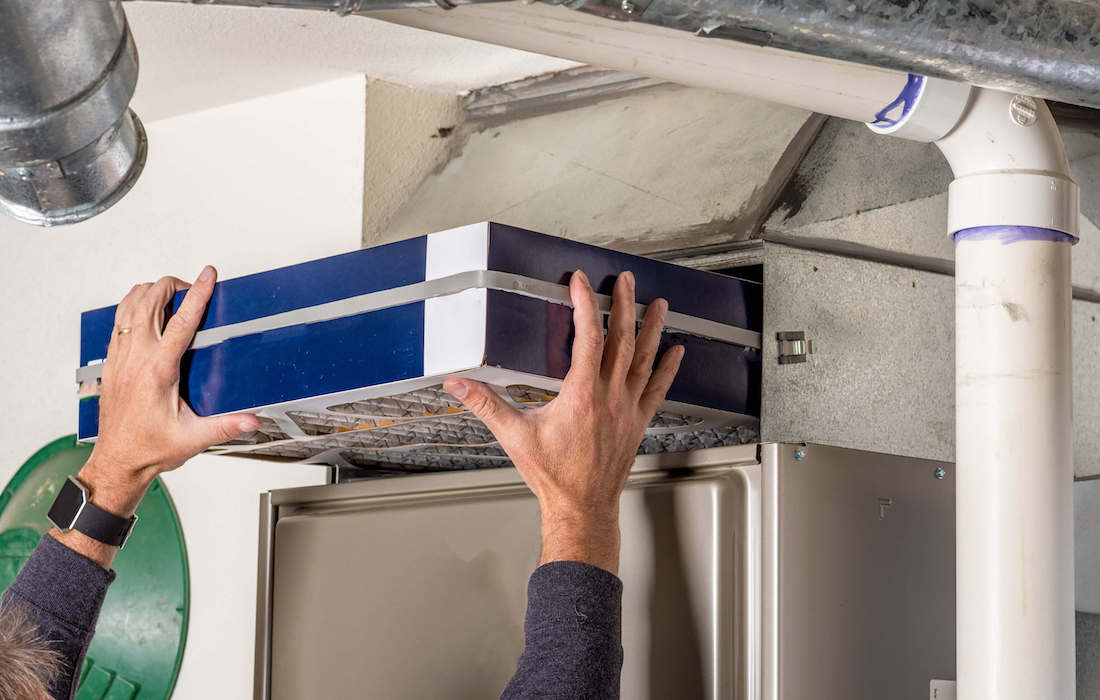When it comes to maintaining healthy indoor air, your air filters are one of the most important aspects. In fact, a clean air filter, can improve your air quality, reduce your energy usage, and keep your system running efficiently. But when it comes to a new air filter, it’s easy to get lost in the options. To help you decide, we’re sharing everything you need to know about the different types of air filters.
Air Filters and Your Home
In order to keep your indoor climate comfortable, air is constantly moving through your system. Air is first pulled from inside your living space through the return ductwork, conditioned in the unit, and finally passed through the air filter before it re-enters your living space through your supply ductwork. Within this process, the main function of your air filters is to catch dust, dirt, debris, allergens, and contaminants in the air before it is sent back into your home. By removing these contaminants, you receive cleaner, healthier air and help your system run more efficiently. However, the level and method of removing these contaminants, depends entirely on the type of filter and its efficiency.
Passive Filters
Passive filters are one of the most common types of air filters. These filters are composed of a fibrous filtering material and, as their name suggests, use a passive filtration method. Passive filters fit into your airflow system and catch particles as the air flows through it. If you are looking to replace your passive filter, you also need to decide between a pleated or fiberglass option.
Fiberglass filters are composed of spun glass, or fiberglass, and tend to be less expensive than their pleated counterparts. On average, standard fiberglass filters are most effective at stopping large dust, dirt, and lint particles from entering your home and need to be replaced every 30 days. In contrast, most pleated air filters only need to be changed every 90 days because of their sturdier composition. Pleated air filters are composed of a wire backed synthetic media that allows them to filter out smaller dust, dirt, and lint particles and catch other contaminants like pollen and pet dander.
Electronic Polarized Media Filters
Electronic Polarized Media Filters use an electrical charge to help remove harmful contaminants from your air. The electrical charge is used to establish a polarized field within your system to attract the small particles that cause allergies and other health issues. As these tiny particles travel through your system, they become polarized and join together with other polarized particles. The negative charge of these particles can then be trapped by the positively charged media pad within the electronic polarized media filter. In other words, an electronic filter will draw contaminants to it, rather than simply catching contaminants as they pass through. While electronic filters are more expensive than the average passive filter, they are highly effective and efficient in removing contaminants from your home’s air.
The Efficiency Of Your Filter
With either filter type, your filter will be given an efficiency rating. The efficiency of a filter is defined as its ability to remove certain types of particles from your air supply. The higher the efficiency of your filter, the higher its ability to trap dust, dirt, pollen, and other contaminants before the air enters your home. The overall efficiency of your filter is determined by a MERV rating, or a Minimum Efficiency Reporting Value. To assign a MERV rating, filters are tested against common contaminants including pollen, dust mites, mold spores, dust, pet dander, bacteria, and tobacco smoke. A filter with a higher MERV rating has a greater ability to filter out these contaminants. As an industry standard, the MERV rating of your filter is a dependable determinant of the overall effectiveness of your filter.
For more information on air filters, call Fayette Heating & Air today at 859-203-4602.


 Skip to content
Skip to content

